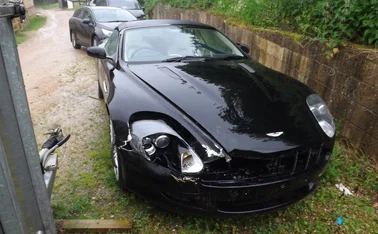
Legal Update: Motor's waiting game

Need to know
- Claimant lawyers and insurers are diametrically opposed on whiplash reforms
- Cutting the discount rate for PI claims could inflate the bill for insurers
- Autonomous vehicles may reduce frequency and severity of motor claims
- The uncertain outcomes of the three consultations leave insurers in limbo
The motor claims market is currently sitting in that state of indecision that business - and pilots - like to call ‘a holding pattern' as it awaits three major government consultations. These, to push the aviation analogy to its fullest, are hovering like unauthorised drones over the airfield, stopping the holding pattern coming to an end.
First, and perhaps most significant, is the soft tissue consultation - whiplash, to its friends. This paper from the Ministry of Justice aims to ‘disincentivise minor soft tissue injury claims' by upping the threshold at which claims can enter the small claims court and reducing the level of payouts. Whiplash claims remain doggedly commonplace despite improvements in vehicle safety and a reduction in reported accidents. Reform is clearly needed, but the claimant lobby and the Law Society are diametrically opposed to insurers.
Access to justice and fair compensation for injuries, they argue, trump insurers' warnings that the system is clearly being used unfairly. Even the most cursory comparison with European claims data reveals whiplash to be an English and Welsh disease that appears infectious only on our side of the Channel and this side of the border with Scotland.
Second, the government's consultation on the discount rate used to calculate lump sum payments for catastrophic injury claims. The rate, currently 2.5%, is applied to a lump sum to estimate the rate of investment return the sum will accumulate over time when compared to increases in the cost of living. The higher the discount rate, the greater the level of comparative return expected, so the lower the initial payment.
Increase in claims costs
No wonder insurers are concerned by rumours suggesting the rate could drop substantially. This could increase the amount an insurer would have to pay in a lump sum award of an infant claimant as much as sixfold. However, the fact that the government picks up the bill for NHS-related claims may temper its enthusiasm for too great a change in the rate.
Third and last is the consultation on autonomous vehicles and advanced driver assistance systems, which recently concluded. This Department for Transport initiative aims to pave the way for the introduction of these new technologies, securing Britain's place in the first wave of implementation. Whatever the results of this consultation, its implications will not be felt for some years - arguably not until the price of autonomous and semi-autonomous vehicles becomes affordable - but the repercussions could be huge. While our claims data are yet to show the impact of these new technologies, it is hardly a great leap of faith to predict that claims frequency and severity will both reduce in the personal and commercial motor space, although the implications for product liability remain the big question.
So, where does all of this leave management attempting to shape their motor claims teams and indeed their reserving requirements? The answer: in limbo. The sector has been in a state of flux for some years, so the conclusions of these big three consultations should generate many of the answers management so dearly needs.
But don't assume those answers will be readily available. It's odds-on that any decision on soft tissue injuries will be the subject of challenge both in parliament and through judicial review. Similarly, the decision on the discount rate could likely go the same way. For claims management, reserving and legal teams, the holding pattern still has some time to go. One can only hope that when a landing is made, it isn't an emergency one.
Only users who have a paid subscription or are part of a corporate subscription are able to print or copy content.
To access these options, along with all other subscription benefits, please contact info@postonline.co.uk or view our subscription options here: http://subscriptions.postonline.co.uk/subscribe
You are currently unable to print this content. Please contact info@postonline.co.uk to find out more.
You are currently unable to copy this content. Please contact info@postonline.co.uk to find out more.
Copyright Infopro Digital Limited. All rights reserved.
As outlined in our terms and conditions, https://www.infopro-digital.com/terms-and-conditions/subscriptions/ (point 2.4), printing is limited to a single copy.
If you would like to purchase additional rights please email info@postonline.co.uk
Copyright Infopro Digital Limited. All rights reserved.
You may share this content using our article tools. As outlined in our terms and conditions, https://www.infopro-digital.com/terms-and-conditions/subscriptions/ (clause 2.4), an Authorised User may only make one copy of the materials for their own personal use. You must also comply with the restrictions in clause 2.5.
If you would like to purchase additional rights please email info@postonline.co.uk








